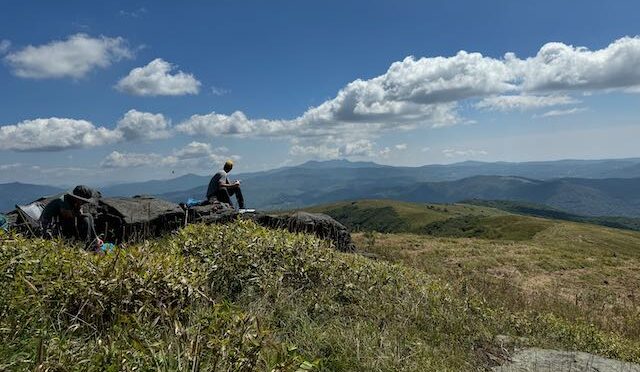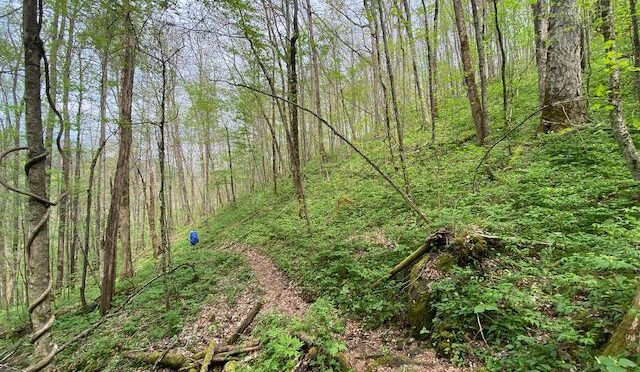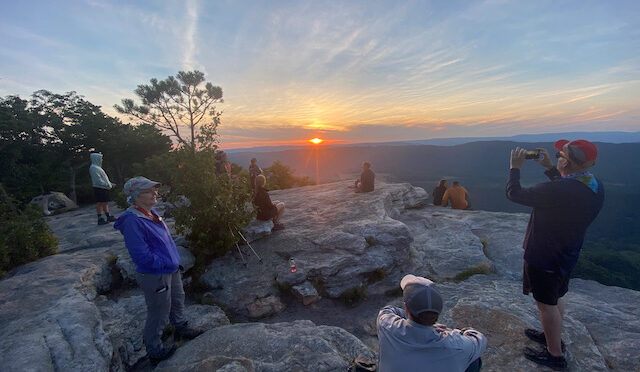Today, we focus on the sometimes traumatizing prospect of hiking a trail with creek crossings — creek crossings that don’t have bridges, and sometimes don’t even have a decent rock-hop. Streams that may come above your knee, streams that may have a strong flow.
Tag Archives: backpacking
The slower the better: a weekend on the AT
This past weekend GetBackpacking! set an SKT — Slowest Known Time. In this case, the Slowest Known Time for a lunch break on a backpacking trip.
* * *
Before we set out Saturday morning from our campsite at Yellow Mountain Gap on the Appalachian Trail, I outlined the morning plan. “We’ve got a long climb — 900 vertical feet in 1.7 miles — up to Little Hump Mountain. We’ll take a break there. Then head on to Hump Mountain for lunch.”
What’s our obligation to our fellow hikers?
We first noticed the couple because of their pack. “Love the external frame,” Allison said.
“We’re old school,” said the man. He was dressed in all camo, standing next to his wife, who was bent over a small trickle of water filtering water into a half-dozen empty soda bottles.
Join us for 3 classic backpack trips in 2024
I used to tell my Intro to Backpacking students that to get the most out of backpacking, to become proficient and competent, you need to take three trips a year. Not necessarily big trips, though one should be at least four days. And a quick overnight just to get away is fine, too. Go any fewer than three times and backpacking could become more of an ordeal: even with a packing list, packing can take twice as long as you fret over each item wondering when you last used it and whether it’s still in good shape. There’s more pressure on trip planning: you only backpack once a year, it better be a good one. And what if the weather goes south? Is that it for the year.
5 of our Favorite Basecamp Backpack Trips
Last week, we extolled the virtues of basecamp backpacking : that is, hiking in a short distance with your camping gear to establish a basecamp, then doing day hikes from there. You get the advantage of backcountry camping minus the burden of hauling 35 pounds with you wherever you go.




